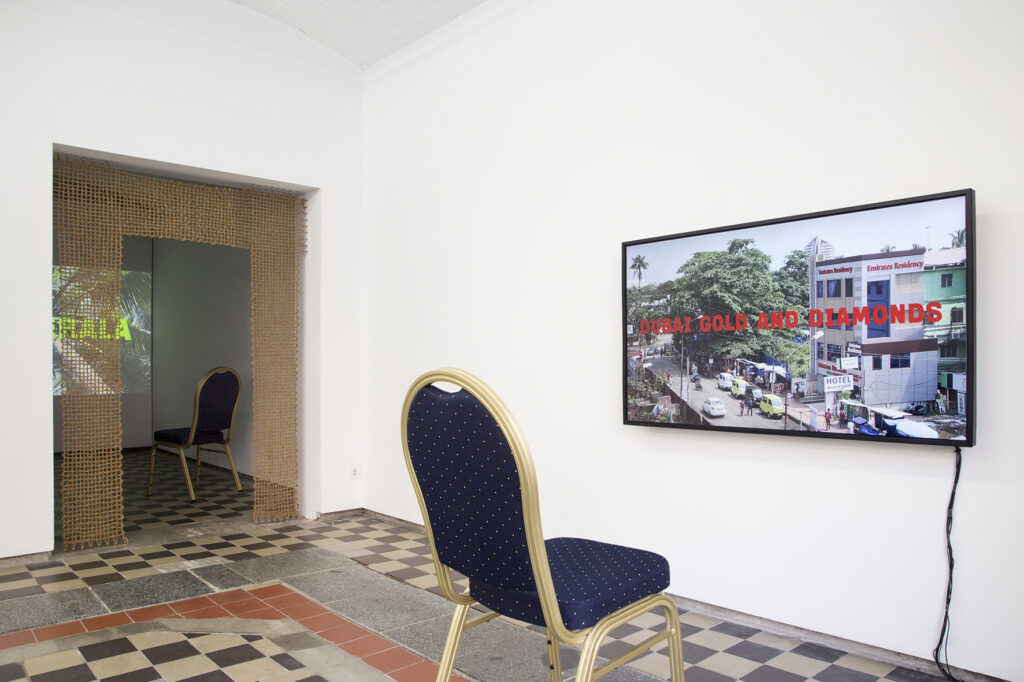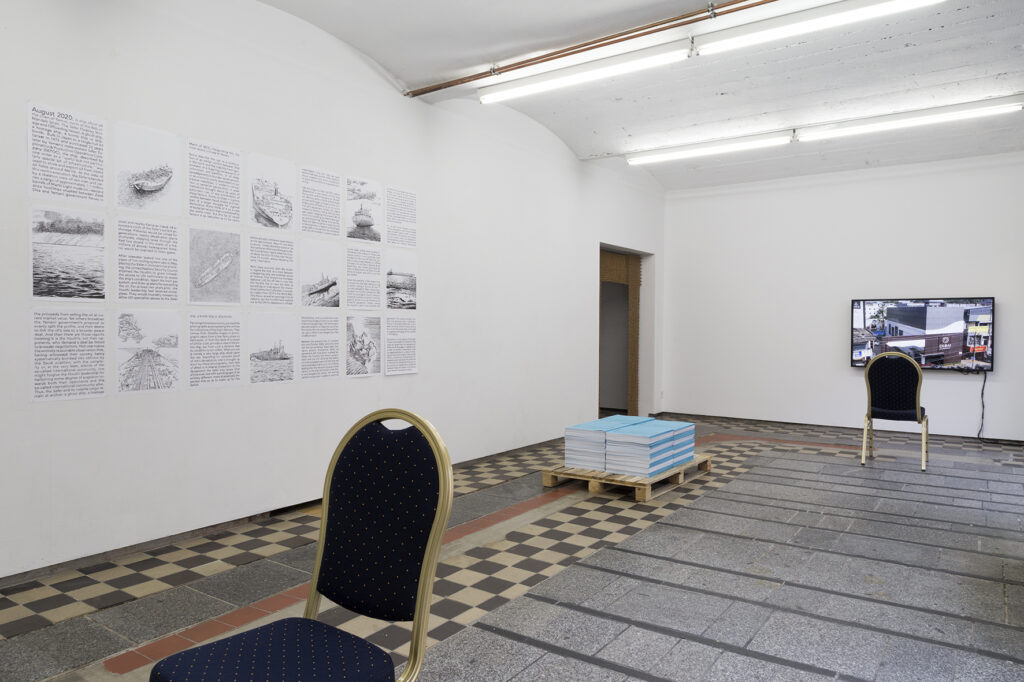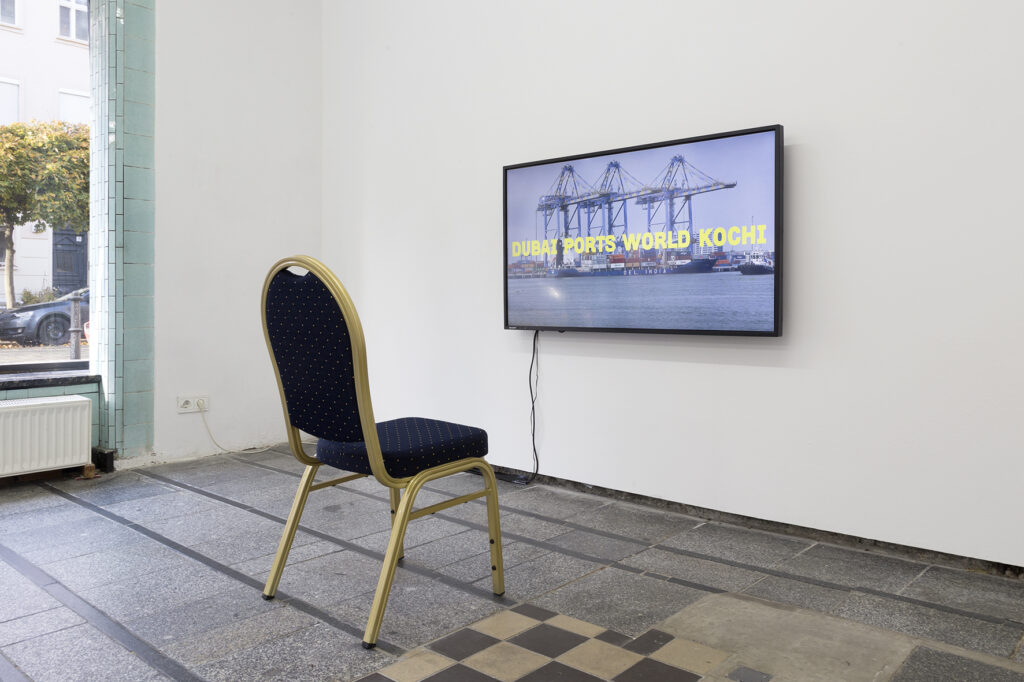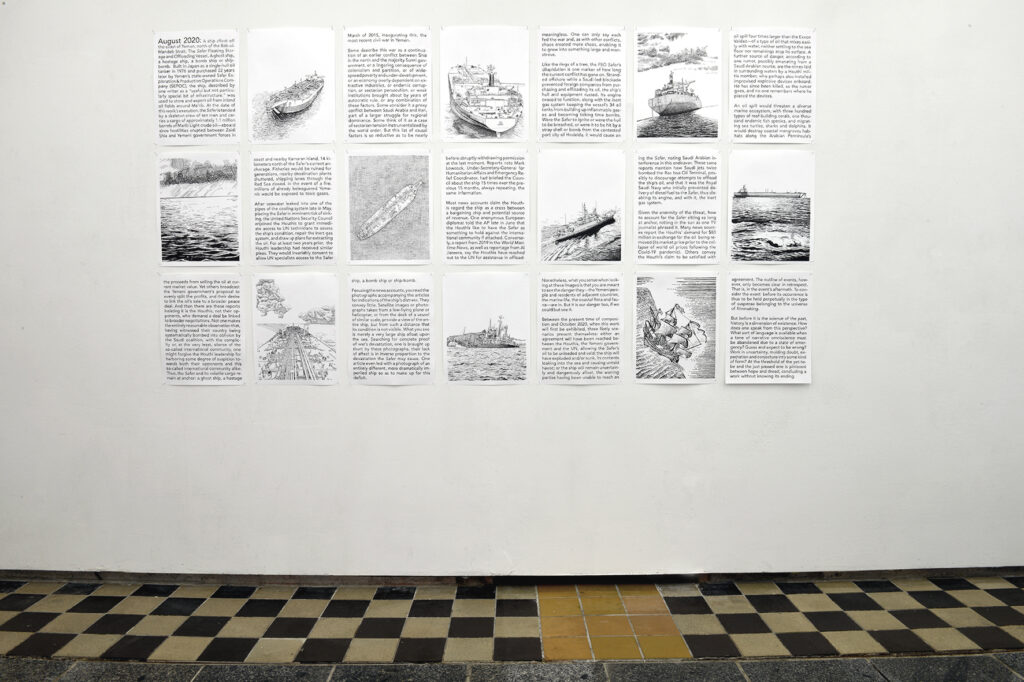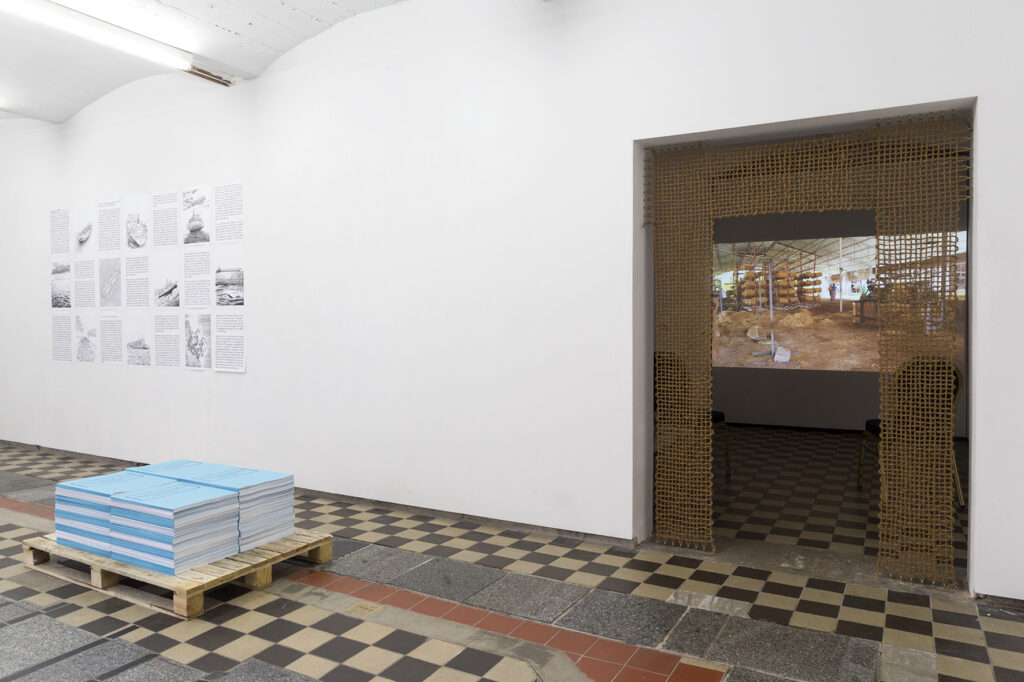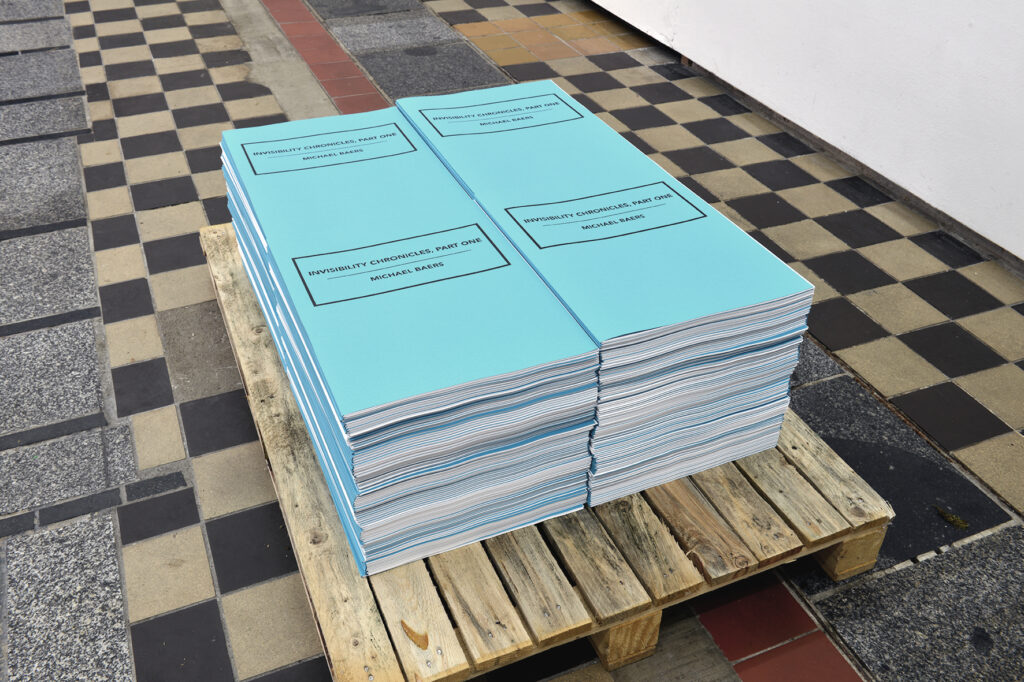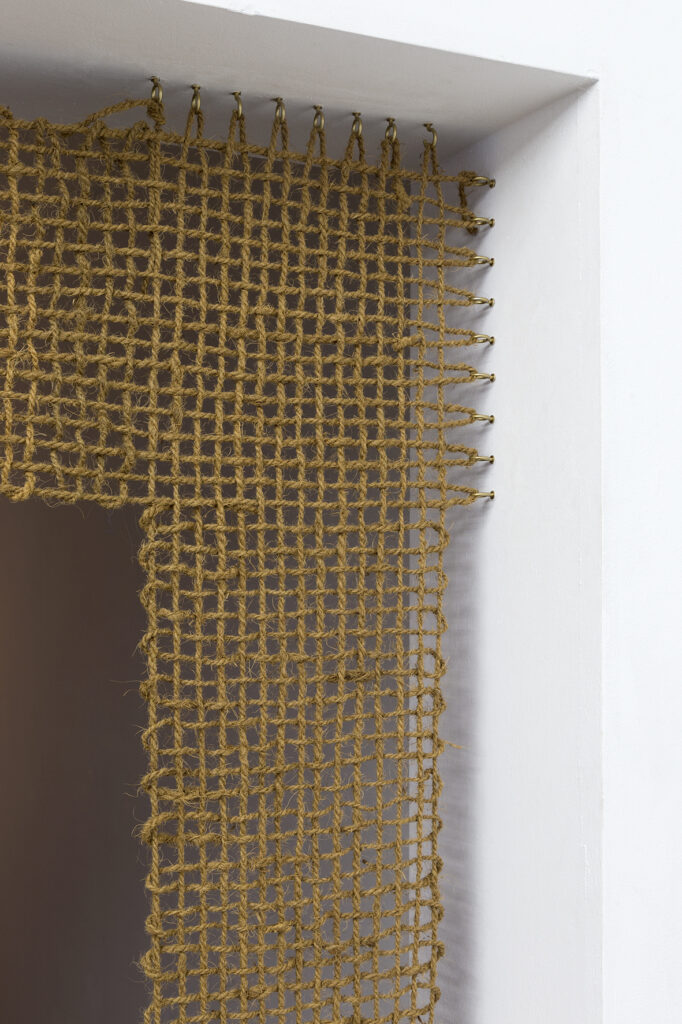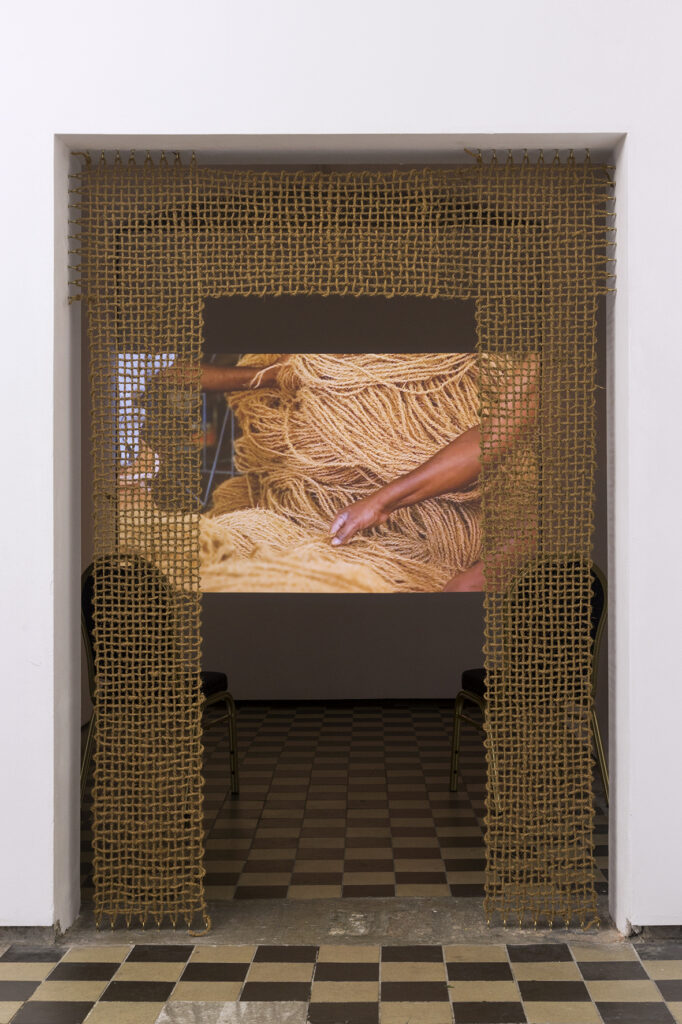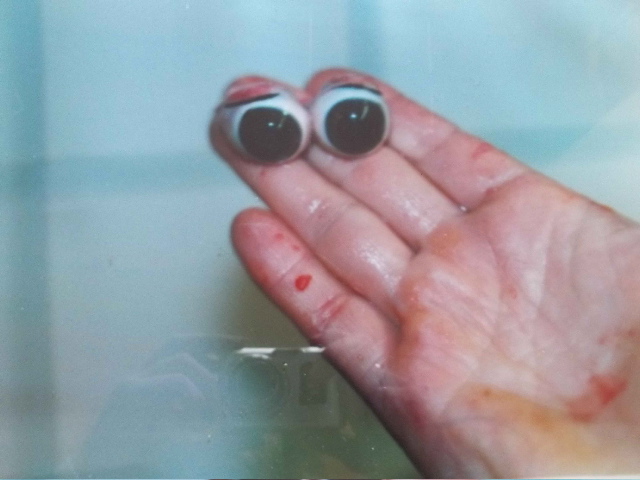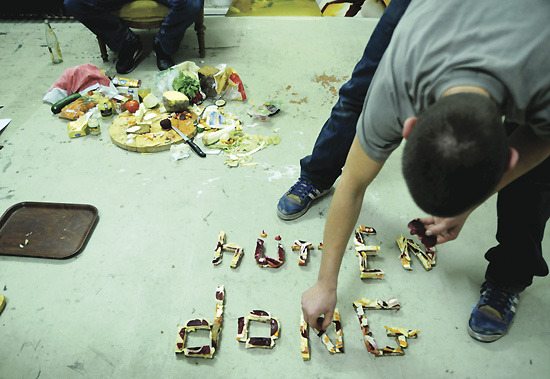Michael Baers & Sophie -Therese Trenka-Dalton
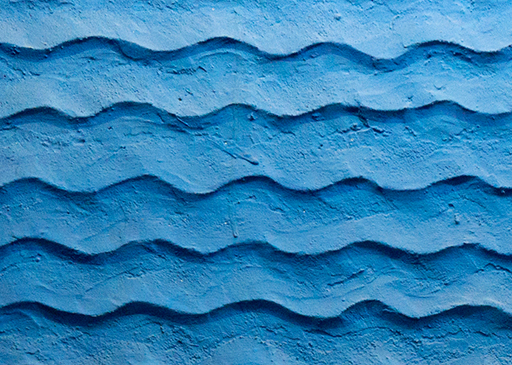
Exhibition: October 9 to November 8, 2020
Open upon appointment: ina@after-the-butcher.de or 01783298106. Please wear a mask in the exhibition space.
On October 11, 2020 at 4 p.m. we invite to an artist talk. The event will take place in the courtyard,
registration required at: after-the-butcher
Invisibility Chronicles, Part One
Why do some conflicts, situations, or events become well-known in Western civil society while others remain obscure? How does the mass media organize our understanding of the contemporary world? What social and cultural consequences occur when stories of international relevance fall out of the media’s hegemonic narratization of the world? What advantage accrues to powerful nation-states by heightening the visibility of some stories while relegating others to this zone of invisibility? What enters into media discourse and how it is framed is subject to a complex set of mechanisms, dictated in part by the geopolitical interests of powerful nations. Growing out of prior research on the unresolved conflict in Western Sahara, Invisibility Chronicles, Part One examines these mechanisms, focusing on a current situation where the international mass media news cycles has rendered a story with profound ecological implications invisible: the ongoing saga of the FSO Safer. Owned by the Yemeni state’s state oil company and occupied by the Houthi rebels since 2015, this floating storage and offloading vessel presently sits stranded off Yemen’s coast, its cargo of 1.1 million barrels of oil in imminent danger either of leaking or exploding—threatening the Red Sea with an environmental catastrophe that would affect the people and environment of the region for generations. Michael Baers’ examination of the FSO Safer story takes the form of a graphic essay detailing how the mass media’s treatment of the story has reinforced a prevailing view of the conflict, before whisking it away to that place where formerly urgent news stories go when they cease being “news.” In doing so, he forces the viewer to occupy, in the words of Avery Gordon, “that sad and sunken couch that sags in just that place where an unrememberable past and unimaginable future force us to sit day after day.” This work has been produced in a limited edition, available for free to the viewing public.
Dubai Gold, Coir Kerala
With the installation Dubai Gold, Coir Kerala, Sophie-Therese Trenka-Dalton presents three current video works created between 2017 and 2019 in the South Indian state of Kerala.
The two videos, Dubai Ports World Kochi (2018) and Dubai Gold and Diamonds (2018), focus on the connection between Kerala and the United Arab Emirates, a continuation of her long-term project Dubayyland (2009–2015). Through her trips to the UAE, the artist learned about the special relationship between the two regions. Since the 1970s, the Emirates and other Gulf States have been a main destination for labor migration from Kerala. Decades of exchange now shape both the personal biographies and economic structure of Kerala. The videos show places that refer to this connection, such as the container port of Kochi, operated by the Emirati company Dubai Ports World, or the numerous stores and advertising posters named after cities in the Emirates, which also often employ iconic motifs such as the Burj Khalifa.
The video work Coir Kerala (2019) documents how coconut fiber (Coir) is processed in small village workshops. Coir mats are an important regional product of tropical Kerala and are used both for domestic use and as geotextiles for land consolidation. The small enterprises are organized as cooperatives. Most employees are women, who earn a little money in addition to household supplies. However, due to the low wages, the coir trade lacks a new generation of workers. In recent decades, unionization has led to improvements in working conditions, but at the same time the coir sector has not been sufficiently modernized, as this would mean the loss of local jobs, with dire consequences for the economic balance of village life structures in Kerala.
The video works were realized with the support of the Goethe-Institut / Max Mueller Bhavan Bangalore and the Kochi Biennale Foundation.
Michael Baers
(* 1968) is an American artist and writer based in Berlin who has exhibited his artistic work in Germany and abroad, including at the Haus der Kulturen der Welt, Museum Angewandte Kunst Frankfurt am Main, the Van Abbemuseum, and Künstlerhaus Halle für Kunst & Medien Graz. He received his PhD from the Akademie der Bildenden Künste Wien in 2014 from its dedicated artistic research department. Since 2010 much of his work has focused on the cultural outcomes of conflict irresolution in the Middle East and Africa. In 2014, he published a lengthy graphic novel/documentary, An Oral History of Picasso in Palestine, about the 2011 Picasso in Palestine project online with the Haus der Kulturen der Welt. It was released in book form by adocs verlag (Hamburg) in 2016. He has also published many essays on contemporary art and artistic research, cultural politics, and urbanism, contributing to a variety of book and publication projects and internationally recognized journals such as the e-flux journal, Vector – critical research in context, and Memory Studies. He is currently an affiliated researcher at the Leibniz Zentrum Moderner Orient (ZMO) in Berlin.
Sophie-Therese Trenka-Dalton
(*1979 Berlin) works with installation, photography, and video. In long-term projects, she investigates cultural appropriation processes that arise in the course of the implosion, shifting, and new formation of power centers.
In 2016, she published her first catalog PALMS (Textem Verlag), which consists of works on the reception of ancient Mesopotamia, the recent history of Iraq, and the architecture of the United Arab Emirates. In 2017, she traveled to South India to trace the relationship between Kerala and the Gulf States. Currently the artist is working on the realization of the event series The Sky was the Limit – Art and Astronomy at the Archenhold Observatory, which will take place in the summer of 2021.
Solo and group exhibitions (excerpt): Kochi Biennale Foundation, Kochi, India (2018), Hamburger Bahnhof, Berlin (2018), Neuer Berliner Kunstverein (2017 & 2006), Alserkal Avenue, Dubai (2017), KW Institute for Contemporary Art, Berlin (2015), Heidelberger Kunstverein (2014), Kunstraum Michael Barthel, Leipzig (2012), Serpentine Gallery, London (2011), Klaus von Nichtssagend Gallery, New York (2011), DEPO, Istanbul (2010), TÄT, Berlin (2009), Nice and Fit Gallery, Berlin (2008), Foundation d`Enterprise Ricard, Paris (2008), HarrisLieberman Gallery, New York (2008), Institute in the Glass Pavilion of the Volksbühne am Rosa-Luxemburg-Platz (2007).
Funded by:

